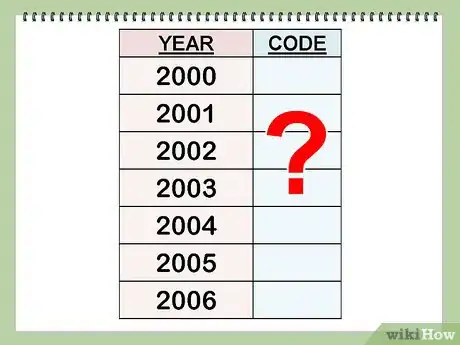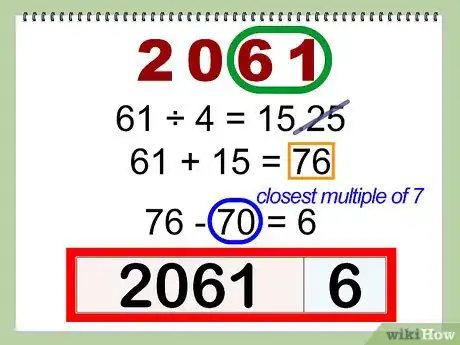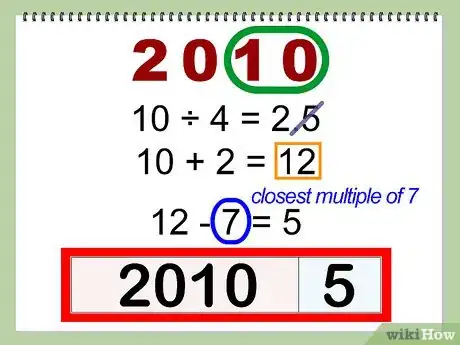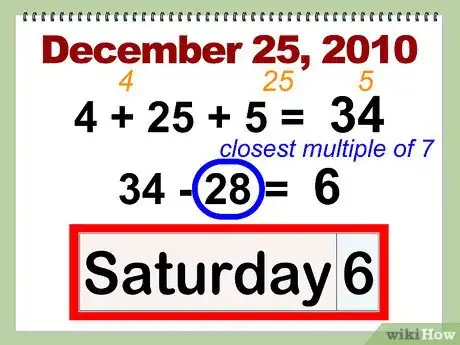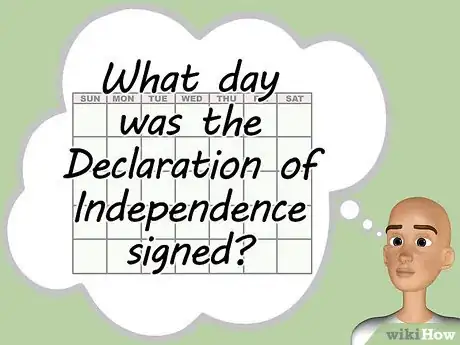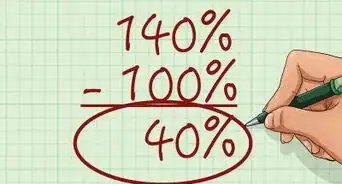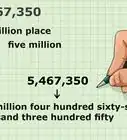X
wikiHow is a “wiki,” similar to Wikipedia, which means that many of our articles are co-written by multiple authors. To create this article, 14 people, some anonymous, worked to edit and improve it over time.
This article has been viewed 59,495 times.
Learn more...
We can all calculate the day of any week mentally just like the character played by Dustin Hoffman in the movie “Rainman”. It's not as difficult as you might think.
Steps
-
1First we need a number for every day of the week:[1]
- Monday is, 1
- Tuesday is, 2
- Wednesday is, 3
- Thursday is, 4
- Friday is, 5
- Saturday is, 6
- Sunday is, 0 or 7
-
2Have a number for every month:[2]
- January is, 6*
- February is, 2*
- March is, 2
- April is, 5
- May is, 0
- June is, 3
- July is, 5
- August is, 1
- September is, 4
- October is, 6
- November is, 2
- December is, 4
- For a Leap Year * January is 5 and February is 1 but that will be explained shortly.
Advertisement -
3Have a code for every year, which is simple as well but for now let’s put it together and see the formula at work:
- Let’s use Christmas 2009;
- December Month Code (4) + Day (25) + Year Code (4), which is: (4 + 25 + 4) = 33.
- Let’s use Christmas 2009;
-
4Now get as close to the 33 as you can with multiples of seven, subtract the difference and then use the remainder for the week code, (7 * 4) = 28, then (33 – 28) = 5, and that’s it, five is the day code for Friday, so Christmas day this year will occur on a Friday.[3]
-
5Before we go any further let’s look at how the Year Code is calculated. There are two ways to do it so I’ll show the first and then I’ll show the one that I think is easier. Once you deal with these you will be able to easily take a date and mentally crunch the day of the week rapidly in your head just like Rainman.
-
6Starting with the year 2000 we assign the code 0 and then add one to each successive year. For example:[4]
- 2000 = 0
- 2001 = 1
- 2002 = 2
- 2003 = 3
- 2004 = 4
- 2005 = 5
- 2006 = 0
- Etc.
- Of course this is problematic because a “Leap Year” occurs every four years so that has to be factored in or not. Leap Years occur every four years, 2008 was a leap year so:
- 2007 = 1
- 2008 = 3
- 2009 = 4
- 2010 = 5
- 2011 = 6
- 2012 = 1
- 2013 = 2
- Notice the zero got moved around.
- The good news is there’s a shortcut, we’ll take the shortcut. Just take the last two digits of any year and divide it by four and ignore the remainder. (Anytime you don't have a remainder it's a Leap Year and then January Code is 5 and February Code is 1 as shown above) For Example:
- The year 2061 is handled as, (61 / 4) = 15 with a remainder of one (Discard the one),
- Then add that answer to the last two digits of the year (61 + 15) = 76
-
7Now we need to use multiples of seven to get as close to that answer as we can so we’ll use (7 * 10) = 70, now subtract the two numbers: (76 – 70) = 6.[5]
- That’s it; the year code for 2061 is 6.
-
8Again take 2010. Divide 10 by 4 and we get 2 with a discarded remainder of 2. So we add 10 + 2 for an answer of 12 and see that a multiple of 7 will give us a 5 left over so the year code for 2010 is “5”.
-
9Let’s see what day of the week Christmas will fall on next year?
-
10Year Code (5) + Day (25) + Month Code (4). That’s; (5 + 25 + 4) = 34. Then multiples of seven will get us to (7 * 4) = 28. The (34 – 28) = 6. The number six is the code for Saturday. So Christmas day 2010 will fall on a Saturday.
-
11Recap
- The formula is Month Code + Day + Year Code and then use multiples of seven to get as close as you can to the answer and then the remainder is the Day Code that gives the Day.
- Month Code; Divide the last two digits of a year by four, discard the remainder and add the whole number to the last two digits of the year. Then use the multiples of 7 to get as close as you can to that answer and subtract the two for the year code.
-
12We could add one more step to that and calculate backwards to see what day the Declaration of Independence was signed but we need to leave Rain man something to do.
Advertisement
Community Q&A
-
QuestionWhen did the calendar we use start?
 DonaganTop AnswererThe Gregorian calendar in common use today was introduced in the year AD 1582.
DonaganTop AnswererThe Gregorian calendar in common use today was introduced in the year AD 1582. -
Question26 Jan 1950 -> 26+6+6 = 38 - 35 = 3. Answer says Wednesday but calendar says Thursday.
 FausernfireCommunity AnswerThis page left out one important bit of info and that is the century code. All of the examples are in the 21st century, which happened to be a zero. If you want to find the day of a date in the 20th century, you need to add 1. for the century codes, you can go to: nelsondellis.com/memorize-the-calendar.
FausernfireCommunity AnswerThis page left out one important bit of info and that is the century code. All of the examples are in the 21st century, which happened to be a zero. If you want to find the day of a date in the 20th century, you need to add 1. for the century codes, you can go to: nelsondellis.com/memorize-the-calendar. -
QuestionWhat day is 11 March 2005?
 Jada AlexanderCommunity AnswerWhen calculating March the 11th, 2005, it would have been a Friday that day.
Jada AlexanderCommunity AnswerWhen calculating March the 11th, 2005, it would have been a Friday that day.
Advertisement
References
- ↑ https://artofmemory.com/blog/how-to-calculate-the-day-of-the-week-4203.html
- ↑ https://sciencing.com/calculate-day-born-5512884.html
- ↑ https://sciencing.com/calculate-day-born-5512884.html
- ↑ https://plus.maths.org/content/what-day-week-were-you-born
- ↑ https://plus.maths.org/content/what-day-week-were-you-born
About This Article
Advertisement




